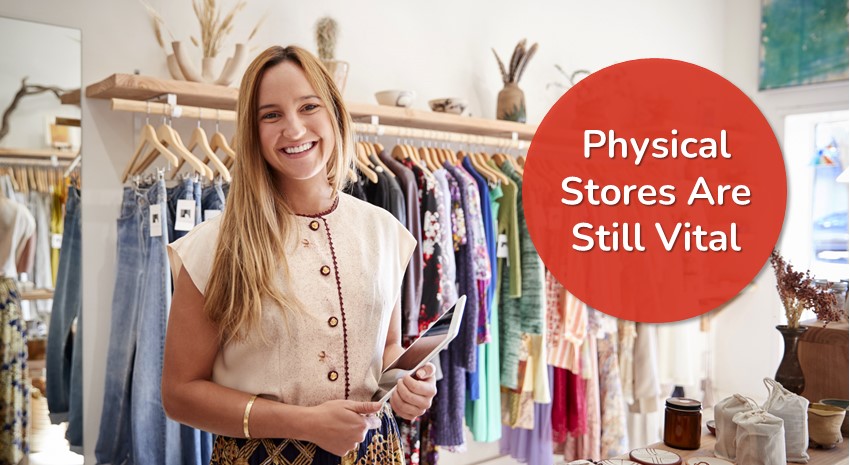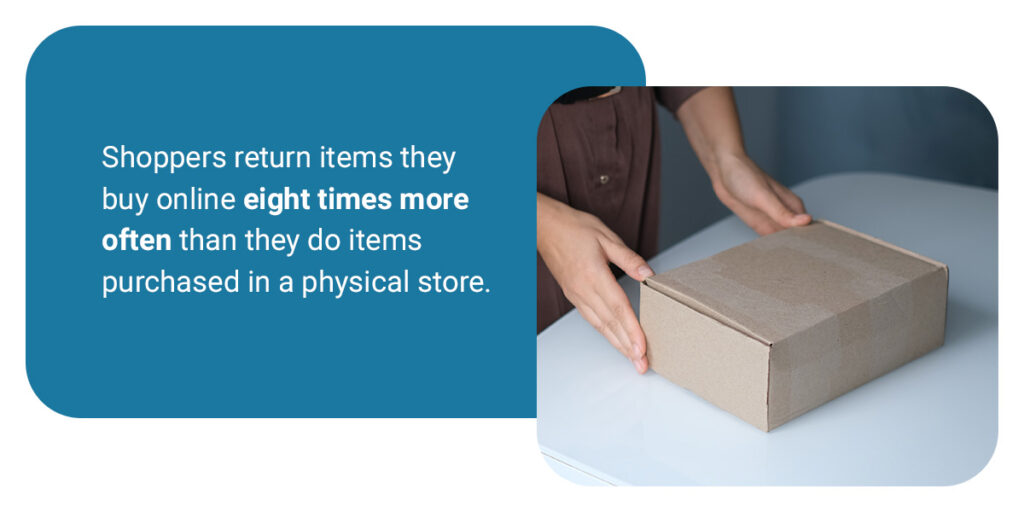10 Reasons Why Brick-and-Mortar Stores are Important for Retail

While eCommerce sales continue to grow, brick-and-mortar stores remain a popular, even lucrative, option for retailers. Nearly half of consumers primarily shop in physical stores, and more than 80% do so at least weekly. Here are 10 reasons why storefronts aren’t going anywhere:
1. Customers Who Pick up in a Store Buy Additional Items
Click and collect, or BOPIS (buying online and picking up in-store), and curbside pickup are very popular with consumers and retailers for their convenience and speed. For retailers, it is cheaper than delivery, brings shoppers in, and can lead to more purchases. Eighty-five percent of BOPIS shoppers make an extra purchase when they retrieve their order from the store.
2. Consumers Are More Likely to Buy a Product They’ve Seen in Person
One significant reason consumers prefer shopping in physical stores is to experience a product for themselves before committing. Sensing or trying on an item helps consumers visualize that product as part of their lifestyle. Some products, like candles or colognes, especially benefit from the in-person experience to drive home the sale.
3. Personalized Customer Experiences Increase Sales
While eCommerce is popular, human interaction is still important. More than 80% of consumers prefer when companies deliver a personalized shopping experience, and 70% think it’s important that they have a personal relationship with the employee or business they’re supporting. Research shows that some companies can generate up to 40% more revenue from personalization.
4. The Brand Experience Is Still Physical at Its Core
Retail is very competitive. It’s a challenge to stand out online, but a physical store provides the opportunity to deliver a powerful brand experience. Today, providing an experience that balances safety, excitement, and convenience can differentiate one brand from another. Brick-and-mortar stores have unique opportunities to maximize the retail experience in a way that eCommerce can’t compete with.
One benefit of in-store sales is the ability to maximize physical displays and point-of-purchase (POP) advertising. POP displays are eye-catching and an effective way to highlight a product’s key features. Recent statistics show that nearly all supermarket shoppers make at least one purchase influenced by POP advertising, with more than 90% making at least one unplanned purchase per visit.
5. Stores Can Simplify and Reduce Returns

Shoppers return items they buy online eight times more often than they do items purchased in a physical store. This aligns with consumer preferences — in-person, box-free returns are the most favored method for returns, even if purchased via an eCommerce store. Even better, over 60% of shoppers report using their refund to make a purchase in the same store they drop off their return.
Buying in person can also reduce a business’s overall return rate, as consumers can try on shoes and clothing to find the right size the first time.
6. Physical Stores Can Be Used as Part of the Supply Chain
One problem with omnichannel retail is that the cost of logistics can explode and erode margins. To combat that, some retailers use some or all of their physical stores as warehouses and fulfillment centers called “dark stores”. This can reduce inventory management and fulfillment costs and expand their reach across larger geographies by improving distribution.
7. Retailers Get Free Market Research About Customers’ Preferences and Habits
Although data collected from an online store can help retailers see trends, they can learn much about their customers by watching them shop and interact with the space and products.
8. Physical Stores Can Bring More Traffic to Online Stores
With the right omnichannel retail strategy, physical stores can work together with eCommerce platforms to generate more online sales. Integrating digital and physical shopping experiences via digital and in-store marketing, mobile apps, in-store events and incentives, and a variety of customer service delivery options sets brick-and-mortar stores up for a more symbiotic relationship.
9. Instant Gratification Is a Powerful Driver
Even at its fastest, consumers can still expect to wait for eCommerce deliveries, and uncontrollable external factors like natural disasters and even traffic flow impact how long it takes for a product to arrive. In today’s climate of instant gratification, 20% of shoppers choose brick-and-mortar stores because they want or need an item right away.
When you combine that with the gratifying rush of discovering new items — a factor that inspires 38% of consumers to visit a physical store — you’ve got a powerful driving force compared to the often slow process of eCommerce fulfillment.
10. Physical Stores Support Local Economies
Almost half of purchases made at a local small business get recirculated back into the local economy, which is three times as financially valuable as larger chain competitors. Brick-and-mortar stores are integral to supporting local economies because they:
- Provide jobs for locals, many of which cater to an entry-level workforce.
- Are more likely to partner with local banks and other financial institutions.
- Typically utilize local suppliers or distributors.
- Foster a sense of community.
- Enhance local shopping districts.
- Promote tourism by offering specific items that shoppers can’t find elsewhere.
- Offer a reliable alternative for populations who can’t utilize technology for online shopping.
Let ArcherPoint Help You with Your Omnichannel Strategy
ArcherPoint provides omnichannel retailing solutions that bridge the digital-physical divide between virtual and physical stores with a single, convenient platform. With solutions like LS Retail, Dynamics 365 Business Central, Dynamics 365 Commerce, and Microsoft Power Platform, we can give you a solution that combines in-store observational and transactional data across digital and physical channels so you can meet customers where they are.
Our retail experts can help you take advantage of these and future trends in retail to keep you competitive. Contact ArcherPoint to learn more about our retail solutions.

Trending Posts
Stay Informed
Choose Your Preferences
"*required" indicates required fields
